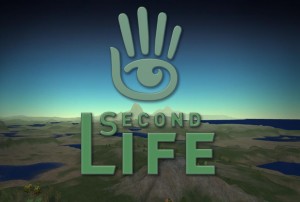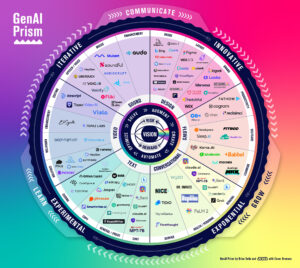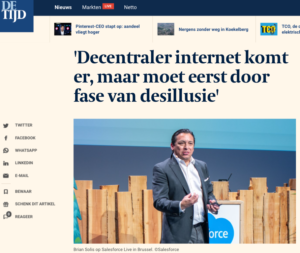Recently, I wrote about a study written by virtual worlds consultancy kzero.co.uk, which reported that membership of virtual worlds grew by 39% in the second quarter of 2009 to an estimated 579 million. Today, I received an update from the Linden Lab and it appears that Second Life is experiencing a second life of its own.
This story begins with an impressive milestone: Second Life Residents have transacted the equivalent of more than $1 billion with each other while spending more than one billion hours in Second Life. These numbers represent significant milestones for not only Second Life, but the virtual worlds industry in general.
The company also shared additional stats that are work noting and sharing:
In total, users around the world have spent more than one billion hours in Second Life.
That’s roughly 115,000 years spent doing everything from meeting and socializing with friends; to attending live concerts; to creating, selling, and shopping for virtual goods; to learning a foreign language; to attending business meetings; and much more. User hours grew 33% year-over-year to an all-time high of 126 million in Q2 2009.
Second Life Residents spend an average of about 100 minutes inworld per visit.
This average session time is significantly greater than those seen with popular social networking websites and reveals the uniquely high level of engagement Residents have with Second Life.
The equivalent of more than USD1 billion has been transacted between Residents in Second Life, who purchase virtual goods and services from one another.
The inworld economy grew 94% year-over-year from Q2 2008 to Q2 2009. Now at nearly USD50 million each month in user-to-user transactions, the Second Life economy is on an annual run rate of more than a half billion US dollars, making Second Life the largest virtual economy in the industry.
Residents create more than 250,000 new virtual goods every day – from clothing to vehicles to buildings to automatic language translators, and more.
There are now more than 270 terabytes of content in Second Life, and this is growing by approximately 100% every year.
More than 18 billion minutes of voice chat have been used in Second Life since voice was introduced in 2007.
Voice minutes grew 44% year-over-year from Q2 2008 to Q2 2009, and more than six billion minutes of voice have been delivered in 2009 alone, making Linden Lab a major VoIP provider.
Approximately 1,250 text-based messages are sent every second in Second Life, and more than 600 million words are typed on an average day.
Roughly 60% of active Second Life Residents based outside of the US, representing more than 200 countries, and the Second Life Viewer available in 10 languages.
The total land area of Second Life is now equivalent to approximately two billion square meters – roughly the size of the state of Rhode Island.
Land in Second Life has grown roughly 18% from Q1 of 2009 and approximately 75% since Q1 of 2008. As the creator and original seller of all virtual land in Second Life, Linden Lab is not only the provider of the worlds largest platform for user-generated virtual goods, but also a leading virtual goods vendor itself.
For a deeper review of the Second Life update and report, please read this post by W. James Au, a trusted and and astute Second Life reporter. As Au observes, “The real second life of Second Life will happen when these stats start reflecting engagement by millions of active users, not hundreds of thousands.”
—
Connect with Brian Solis on:
Twitter, FriendFeed, LinkedIn, Tumblr, Plaxo, Plurk, Identi.ca, Posterous, or Facebook
—
Click image to purchase (book and poster):








Brian Solis has some interesting stats on second life
Definitely very interesting to say the least…
perhaps this kind of impressive growth will silence those critics who delight in forecasting the failure of linden labs and secondlife.
Brian…
I'm not that impressed — honestly. I'm increasingly un-impressed at quantitative measures of the Web experience and in particular, social media. You've got a great summary here — don't get me wrong. And this is noteworthy. But I think we read a lot of this — day in and day out. What about the quality of those text messages that get sent? How many are commercial v personal, effective commercial messages, misplaced krass come-ons? What about the quality?
USA Today http://budurl.com/l6wb is breathless to shout the numbers but the social media realm isn't about quantity — it's about quality. From a user/consumer side to the MARKETER side too. Yet all we do is throw money at banners on Facebook — and ignore research that continually suggests what a waste it all is.
Why? Faux research like comScore's from what I gather: “Twitter users spend 66% more dollars on the Internet than non-Twitter users!” and similar drivel.
Marketers seem committed to using social quantitatively — mass communications. Banners. Talking “at.” Not prompting for CONTINUED, systematic engagement that leads down the sales funnel.
Just my thoughts but what am I missing here or just not getting?
Jeff, I think overall what's most interesting to me is that SL is still an interesting phenomenon and an under appreciated and understood opportunity for study and engagement. But you're right, in the end, these numbers must be more substantive to truly invite me to spend more time analyzing their meaning. Although W. James Au seems to do great work: http://nwn.blogs.com/nwn/2009/10/new-world-news…
Brian…
I'm not that impressed — honestly. I'm increasingly un-impressed at quantitative measures of the Web experience and in particular, social media. You've got a great summary here — don't get me wrong. And this is noteworthy. But I think we read a lot of this — day in and day out. What about the quality of those text messages that get sent? How many are commercial v personal, effective commercial messages, misplaced krass come-ons? What about the quality?
USA Today http://budurl.com/l6wb is breathless to shout the numbers but the social media realm isn't about quantity — it's about quality. From a user/consumer side to the MARKETER side too. Yet all we do is throw money at banners on Facebook — and ignore research that continually suggests what a waste it all is.
Why? Faux research like comScore's from what I gather: “Twitter users spend 66% more dollars on the Internet than non-Twitter users!” and similar drivel.
Marketers seem committed to using social quantitatively — mass communications. Banners. Talking “at.” Not prompting for CONTINUED, systematic engagement that leads down the sales funnel.
Just my thoughts but what am I missing here or just not getting?
Jeff, I think overall what's most interesting to me is that SL is still an interesting phenomenon and an under appreciated and understood opportunity for study and engagement. But you're right, in the end, these numbers must be more substantive to truly invite me to spend more time analyzing their meaning. Although W. James Au seems to do great work: http://nwn.blogs.com/nwn/2009/10/new-world-news…
Go to http://inflife.net/ and get the SL Pop Viewer! Best viewer I have EVER used! You’ll be VERY happy with it, and you’ll never have to deal with those pesky slow logins and load times. The SL Pop Viewer completely blows away all other viewers by far!!! Go get it now!
It would be surprising to know that residents create lots of virtual goods every day – from clothing to vehicles to buildings to automatic language translators, and more.